1985 GSX-R750 review: A legendary superbike
Niall reminisces about the 1985 GSX-R750, the legendary superbike that marked its place in history well over a quarter of a century ago.
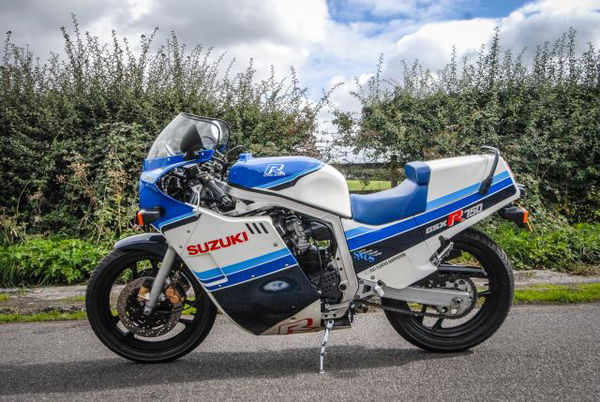
Find an excellent example of Suzuki's 1985 GSX-R750 and you'll realise why it was one of the key machines that transformed sports bikes. "Life changing," as Whit would say.
So let's set the context: it's the early 1980s. Your name is Etsuo Yokouchi, you work for Suzuki in the engine design department, and you’ve just been told to produce, from scratch, a completely new kind of 750 sports motorcycle. One that will, straight out of the box, destroy the opposition not just on the street but also on the racetrack.
Wow. Er, OK.
Early '80s sports machines were heavy and wallowy. In the preceding ten years, Honda and Kawasaki had been battling for the performance crown. Honda started the power wars off with its 68bhp CB750. Kawasaki’s 900cc Z1 of 1973 raised the bar to 81bhp. By 1978, Suzuki fans had their own superbike, the 90bhp GS1000. It was a fine machine, but still old school in its design and heft. For Suzuki, the 750 class was a much more logical target for disruption, particularly if motorsport was going to be part of the plan – which, for them, it most definitely was.
A whole new approach was needed. There would be horsepower, sure, but it would be harnessed in a very different way. Rather than the heavy-metal battleaxes of Honda and Kawasaki, Suzuki’s entrant into the hypersports market would be a rapier, employing the ‘add lightness’ principles established in the F1 car world by visionaries like Colin Chapman.
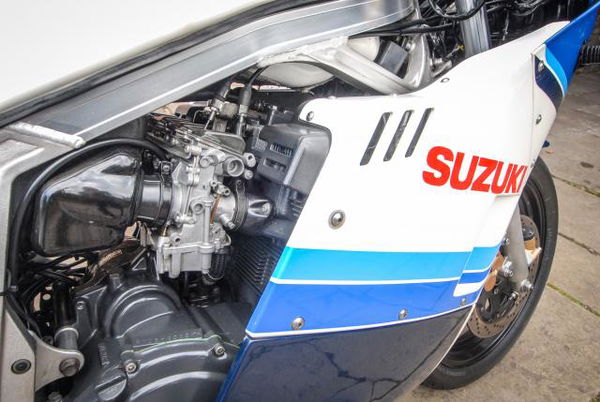
Sometime racer Yokouchi was excited by the challenge. So were the members of his engineering team, many of whom were enthusiastic weekend ‘company racers’ who up to that point had been obliged to try and get their kicks (and keep the company end up) aboard the heavy and gutless GSX750.
Yokouchi told his crew to build him a 750 engine that would deliver 100bhp and 146mph. That may not seem a lot for a 750 today, but in the early 1980s when the development of the GSX-R began, it was off the scale. The engineers were given carte blanche to change anything and everything. That meant a radical new look at both engine and chassis design and an even more radical look at weight saving.
Yokouchi then got his team to dissemble a 1983 GSX750E, marking each engine and chassis part with a red or blue dot. Red parts were those that wore quickly or failed: blue parts were those that never or very rarely broke. Analysis of the results showed a preponderance of blue parts, which was great news in terms of reliability, but not so good from a weight perpective. A much more adventurous (not to say risky) plan would be needed for the new bike.
Early experimentation on a GSX750 brought 97bhp, unheard of for a production bike of that capacity, but still short of Yokouchi’s demands. They were on the limit with that 97bhp motor, anyway. During dyno testing it regularly blew the aluminium out of the spark plugs, loosened the cylinder sleeves and bent the valves. Not something that would have played that well in the retail environment.
Eventually Suzuki’s engineers came through with an uncompromising but also reliable motor featuring 29mm flat-slide carbs, some magnesium components, and a 100bhp+ output. All the engine parts had been optimised not just for weight but also for durability. The motor was successfully dyno tested, screaming hard on the redline for a full 24 hours without breakage. In works racer spec it could go to 130bhp.
Getting rid of engine heat had been Yokouchi’s team’s biggest challenge. Remember that engines were still air-cooled at the time. Chucking on a full watercooling system would have boosted reliability but would also have added around 10% more weight to the engine package.
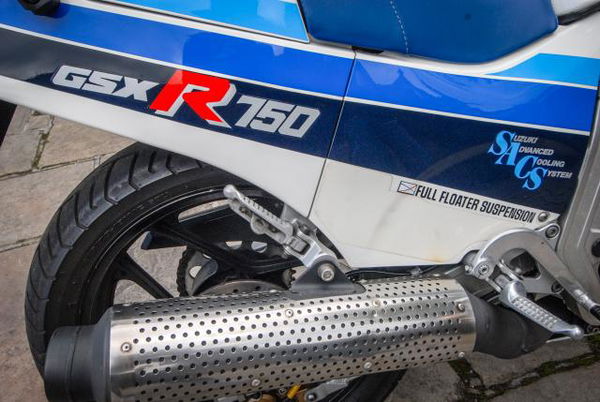
The solution they came up was ingenious: better air cooling combined with a separate oil cooling setup for the top half of the engine. They called it SACS – Suzuki Advanced Cooling System. The SACS system delivered watercooling levels of heat dissipation without the weight penalty.
Out went the old GSX750’s tubular steel cradle frame, which tipped the scales at nearly 40 pounds. In its place came a box-section aluminium MR-ALBOX chassis with a minimal amount of welding. It was so light – just 17 pounds – that the Hamamatsu line workers at the factory could easily pick them up with one hand.
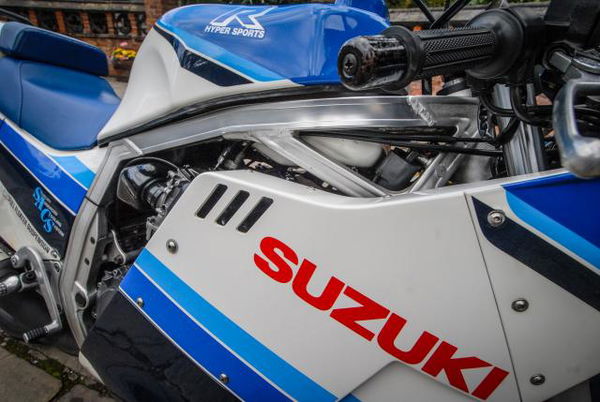
The tank sat on the frame, not over it, showcasing the gorgeous frame and swingarm in a wholly new way. The twin-headlamp fairing and seat unit had no unnecessary curves. The bike’s flat and utterly functional look made it the nearest thing to an endurance racer yet, and gave rise to the ‘slabside’ nickname.
The ‘racer on the road’ thing wasn’t just a look. It was real. The clocks mounted in foam, the braced 41mm forks, the tank breather tube and flip-back filler cap, the 18in wheels specified to ease the lives of endurance race teams when just about every other road bike had 17s – it was all real.

The whole shebang weighed in at 176kg in US spec and 179kg for the Japanese domestic market version. That was a staggering 20% cut on the norm for the 750 class at the time.
The GSX-R 750F was shown at the 1984 Cologne bike show and put on sale in March 1985 at a temptingly affordable price. I was working for SuperBike magazine at the time, and can still remember the seismic impact it had on sports motorcycling. The visual promise was fully backed by reality, too. Not just on the road where, if you likened previous 750s to a thrush or a sparrow, the GSX-R was a humming-bird – fast, darty, super-light, and hugely responsive – but also on the world’s great racetracks. On its world endurance debut, the Le Mans 24 Hours, it came first and second – an unbelievable result.
One year after the first 750 appeared, Suzuki acknowledged complaints about twitchiness by adding an inch to the R’s swingarm, a mod that was incorporated into the new-for-1986 GSX-R 1100J, an alloy-framed big-bore iteration of the R phenomenon. The 750’s incredibly spindly wheels were beefed up to stop racers’ complaints about them twisting under pressure.
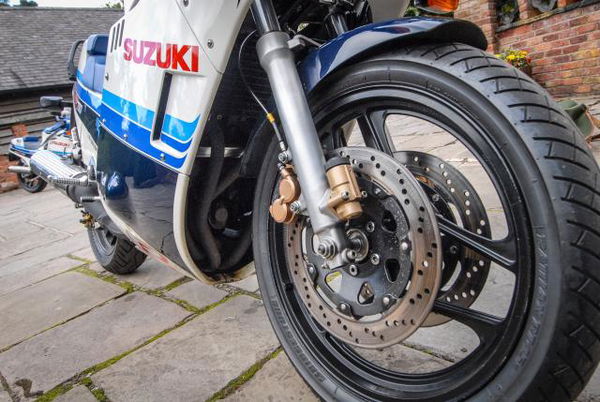
Subsequent GSX-Rs became more rounded and generally softer as dull economics and the need to think about the bottom line got in the way of specialisation. In most aspects of performance, the later Rs were probably objectively better. They just didn’t seem it. As the laser focus of the first-gen bikes was progressively lost, the chasm that had been opened up over the opposition by that first GSX-R quickly eroded away.
The first GSX-R750 (it was sold as a 400 in 1984 in Japan) was incredibly light at 176kg with sophisticated suspension and race-ready brakes. Oh yes, and it came with drop-dead gorgeous racer styling, to all intents looking like a factory endurance racer, and finished in factory colours to boot.
In 1985 there was nothing sexier.
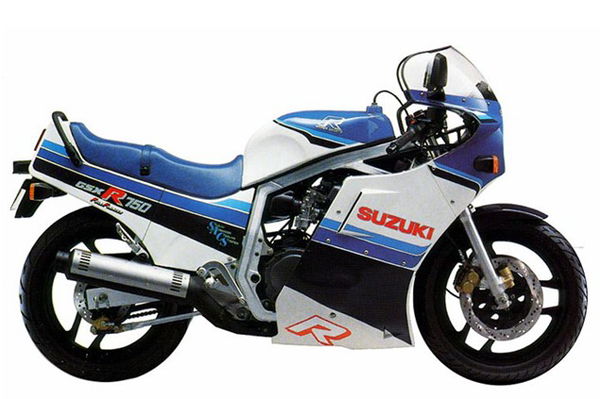
And if it looked good in the showroom, it positively set the racetracks alight. Some of us will remember Kevin Schwantz's Transatlantic racer, used to batter the hell out of Wayne Rainey's VFR750.
The more cultured among us remember Mick Grant's island swansong, winning the 1985 750 Production TT on this, the first of the GSX-Rs.
Despite the successes, though, the GSX-Rs had their problems, and significant ones for the racers. Essentially they were too light, underspec'd on wheel spindles, swingarm pivots, quite possibly even on frame thickness (alloy box sections set in traditional duplex format).
The following year's G model rectified these issues and added a longer swingarm to boot, which went a long way to calming the GSX-R's lively ride.
Compared to today's bikes it's still awesomely light, it's also spacious and torquey, even if it lacks the rigidity, razor-sharp handling and searing top end power.
The problem is most are nasty auld knackers or dodgy imports. Good ones are out there, but many will have been affected by the passage of time and miles.
Expect some scratches and paint fade on the bodywork (and there's lots of it), and budget for new bearings, bushes, suspension seals and fork oil unless there are receipts to prove the work has been recently done.
Avoid all 'street fighters', anything tuned or heavily modified. Look for cherished machines either standard or with sensible chassis upgrades.
And be quick, or Mr Whitham will have it away: "They're fookin' great, if I could find a really good one I'd have it, sharpish."
Key ID: flat-sided rear panels, hence nickname 'slab-sider'
Don't fear: higher miles - the engines are very strong
Also consider: 1986 Suzuki GSX-R1100, 1988 Yamaha FZR1000
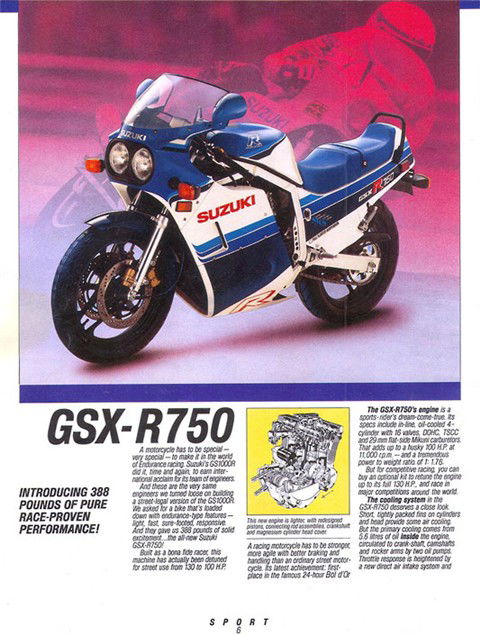
1985 GSX-R750 specs
- Engine: 747cc, 16-valve air/oil cooled in-line four DOHC
- Top speed: 160mph
- Power: 106bhp @ 10,500rpm
- Torque: 47 ft/lbs @ 8,000rpm
- Compression ratio: 9.8:1
- Bore x stroke: 70 x 48.7mm
- Front brakes: Dual disc
- Rear brake: Single disc
- Dry weight: 176kg
- Seat height: 755mm
- Fuel capacity: 19 litres
- Colours: Blue/white
Sponsored Content
Latest Reviews









